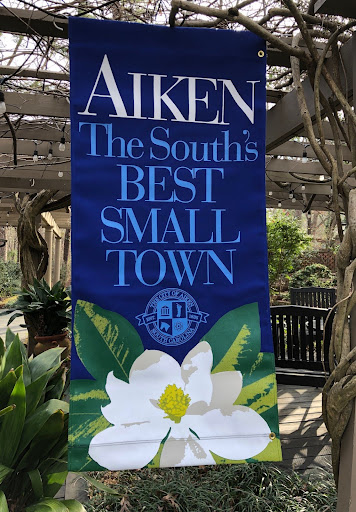
Technology has changed many things, including marketing. Things that worked before don’t work now, and things that work now were impossible before.
However, no matter how far back you go, there has always been one marketing tool that has stood the test of time for the longest.
Banners! More specifically, downtown banners are the tool that has remained relevant even though the word is much more directed to digital marketing.
But are downtown and canvas banners still relevant, or have they been replaced?
The Evolution of Advertising in a Digital World
Digital advertising is among the most lucrative and easy-to-enter industries today. Social media has changed the way companies think and reach customers.
The Dominance of Modern Marketing Strategies
Marketing today is much easier than before the internet. With so many people glued to their phones and social media, spending most of their day on Instagram, advertisers see a way to profit.
The Astonishing Numbers in Digital Marketing
Social media reaches 5,07 billion people annually. That’s more than half the world’s population presented as an audience ready to consume advertisements.
Digital advertising through social media like YouTube, Instagram, and TikTok is practical, easy to share, and cost-effective.
So, with that being said, is there even a point in investing in other types of marketing?
The Resilience of Print Advertising
Of course, there is! Billboards, park benches, buses, and canvas flags are everywhere. While print might have slowed down, it is far from over.
Endurance Against All Odds
Technology has managed to do a lot, reaching billions of people, but it can never replace those recognizable downtown banners.
Canvas banners are up and alive, and they are also highly effective. The fact that you can feel the fabric and see it there with your eyes affects the customer differently than any online ad.
Examples of Effective Print Advertising
We’ve all seen Pepsi cans dressed up as Coca-Cola cans for Halloween. That is living proof that if done right, both canvas flags and print advertising can work; you just have to be a little clever.
Colgate, Chupa Chups, Volkswagen, and others have all successfully marketed using nothing more than print and a good idea.
The Unique Role of Downtown Banners
Digital ads are easy to skip past or not pay attention to, but downtown banners stand out because they are physically present in the cityscape.
Capturing Attention
Banners placed in downtown places with a lot of foot traffic, like busy streets or business districts, can get the attention of people walking, driving, and even public transportation.
People can’t miss them because of their bright colors, bold designs, and big size. They make an impact on people who see them.
Creating Memorability
Banners in central areas are also easy to remember because of their appearance.
Studies have shown that people remember ads they see in real life better than ones they see online.
In this case, real ads appeal to more than one sense, like sight and touch, which strengthens the message and makes it easier to remember.
Common Challenges Faced with Downtown Banners
We’ve established that downtown banners are effective but come with challenges.
Weather Conditions
Weather is one of the most common problems associated with outdoor banners. Clearly, weather events such as hurricanes, tornados, or hail storms can damage or destroy exterior products but under normal conditions the main factors that can affect the look and longevity of outdoor banners are UV exposure, wind and acid rain. The use of high-quality materials, including substrates, inks and finishing materials are key to mitigating the harmful effects of weather. Utilizing premium blockout vinyl with reinforced scrim, solution dyed marine acrylic fabrics, high yarn count marine grade polyester, latex and UV inks and UV resistant thread are essential components in creating products that can counteract the deleterious effects of weather conditions
Design Limitations
A physical marketing tool has the limitation of being tangible. Banners are made once. After that, they can be reused but can’t be tweaked or changed.
This forces business owners and designers to make a choice. If the goal is to reuse the banner, they have to predict what will work in some time, not just about the present. Plus, they have to be sure they know what they want.
Regulatory Constraints
Although rare, sometimes regulations and policies might rain on a business owners parade. Color or certain shapes might not be allowed on your canvas banners.
Solutions to Overcome These Challenges
There are some big problems with city signs, but they are not impossible to solve.
Weather-resistant Materials
Buying high-quality materials that won’t break down in bad weather can help city banners last longer and stay strong outdoors.
UV-resistant inks, stronger stitching, and long-lasting surfaces can help keep color from fading, reduce tearing, and mediate other effects of being outside as little as possible.
Creative Design Approaches
Advertisers can get around design limitations by creating creative ways to make city banners look their best within their size and style limits.
Collaborative Engagement with Authorities
Working with local governments and regulatory bodies is important for determining the rules and obtaining the permits needed to put up banners in downtown areas.
Building good ties with the right people, handling concerns ahead of time, and following the rules can speed up the approval process and get the campaign up and running faster.
Conclusion
It’s clear that even with the digital revolution in full swing, downtown banners hold their ground as critical players in advertising.
They’re not just pieces of cloth waving in the wind; they’re attention-grabbers, community builders, and city shapers.
Sure, they face challenges like weathering and design constraints, but we can overcome these hurdles with some creative thinking and collaboration.
